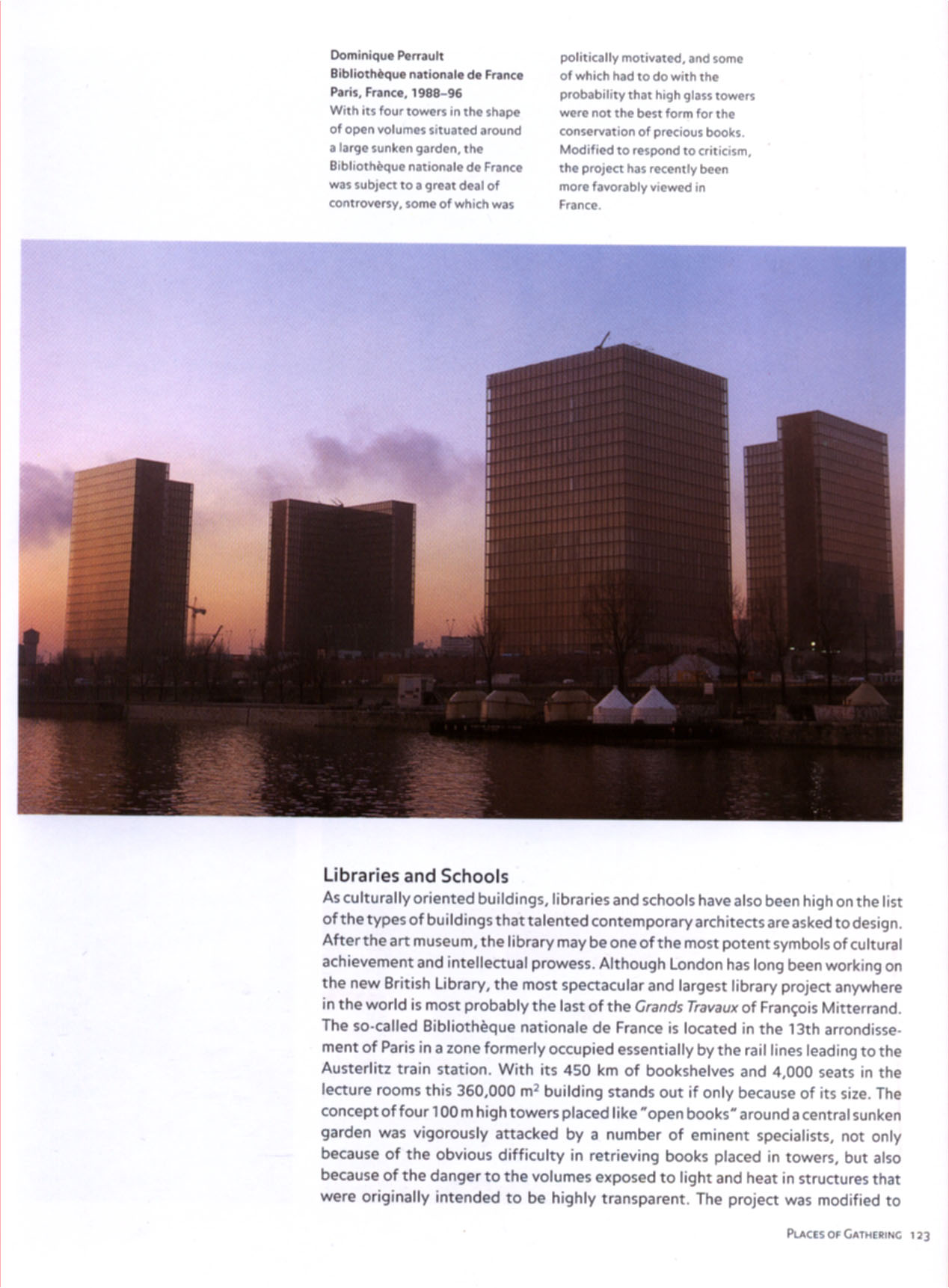New Forms Taschen 115

Dominique Perrault Bibliothoque nationale dc Franca Paris, Franca. 1988-96
With its four towors in thc shapc of open volumes situated around a large sunken garden, the Bibliothequc nationale de Franca was subject to a great deal of controversy, some of which was politically motivated. and some of which had to do with the probability that high glass towers wcrc not the best form for the conservation of precious books. Modified to respond to criticism, the project has recently bcen morę favorably viewed in France.

Libraries and Schools
As culturally oriented buildings, libraries and schools have also been high on the list of the types of buildings that talented contemporary architects are asked to design. Af ter the art museum, the library may be one of the most potent symbols of cultural achievement and intellectual prowess. Although London has long been working on the new British Library, the most spectacular and largest library project anywhere in the world is most probably the last of the Crands Travaux of Franęois Mitterrand. The so-called Bibliotheque nationale de France is located in the 13th arrondisse-ment of Paris in a zonę formerly occupied essentially by the raił lines leading to the Austerlitz train station. With its 450 km of bookshelves and 4,000 seats in the lecture rooms this 360,000 m2 building stands out if only because of its size. The concept of four 100 m high towers placed like 'open books' around a central sunken garden was vigorously attacked by a number of eminent specialists, not only because of the obvious difficulty in retrieving books placed in towers, but also because of the danger to the volumes exposed to light and heat in structures that were originally intended to be highly transparent. The project was modified to
Places or Gathecinc 123
Wyszukiwarka
Podobne podstrony:
New Forms Taschen 115 Dominique Perrault Bibliothoque nationale dc Franca Paris, Franca. 1988-9
New Forms Taschen 178 natural phenomena. I like the idea that architeaure comes f rom some sort of m
27702 New Forms Taschen 130 Frank O. Gehry Disney Concert Hall Los Angeles, California, 1988- (
New Forms Taschen 129 Fumihiko Maki Ycrba Buena Center for the Am San Francisco, California, 1991-93
84034 New Forms Taschen 057 Sir Norman Poster Torre de Collserola Barcelona. Spain, 1988-92 Con
New Forms Taschen 121 Makoto Se i Watanabe Aoyama Art School Tokyo, Japan. 1988-90 Like a mecha
New Forms Taschen 091 Fumihiko Maki National Museum of Modern Art Kyoto. Japan, 1983-86 Fumihik
New Forms Taschen 222 Bibliography ■Architects in Cyberspace", Architectural Design Profile&nbs
11115 New Forms Taschen 222 Bibliography ■Architects in Cyberspace", Architectural Design Profi
więcej podobnych podstron